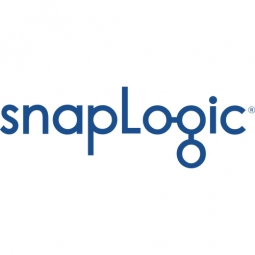公司规模
Large Corporate
地区
- America
国家
- United States
产品
- SnapLogic Server
- salesforce.com Snap
- Snap Store
技术栈
- REST-based engine
- SQL Server
- SnapLogic Designer
实施规模
- Enterprise-wide Deployment
影响指标
- Productivity Improvements
- Cost Savings
- Digital Expertise
技术
- 平台即服务 (PaaS) - 连接平台
- 应用基础设施与中间件 - 数据交换与集成
适用行业
- 教育
- 医疗保健和医院
适用功能
- 商业运营
- 质量保证
服务
- 系统集成
- 软件设计与工程服务
关于客户
The Advisory Board Company is a leading provider of comprehensive performance improvement services for healthcare and educational institutions, serving over 2,800 member organizations. It offers a range of services including operational best practices, business intelligence, management training, and consulting support. The company is dedicated to enhancing business processes through cloud-based application software, working in tandem with traditional on-premise technology infrastructure. The Advisory Board Company is migrating from Microsoft CRM to a customized salesforce.com implementation to manage member services, while continuing to use Microsoft SQL Server as a data warehouse and reporting platform.
挑战
The Advisory Board Company needed to migrate a large volume of data from its on-premise CRM application to salesforce.com. The IT team faced challenges in synchronizing data among divergent applications, with information spread across more than two million records. The existing integration software was costly and unable to meet data orchestration needs, particularly with cloud-based solutions like salesforce.com. The company required a more efficient way to move its massive enterprise database to the cloud.
解决方案
The Advisory Board Company deployed SnapLogic Server and the salesforce.com Snap to create a seamless connection between on-premise and cloud-based applications. SnapLogic's Snap Store, offering certified integration plug-ins, enabled the company to complete the migration efficiently. The SnapLogic Server acts as a central hub for connecting SaaS, Cloud, and on-premise applications, offering discoverable, callable, and reusable data services. The SnapLogic Designer provides an intuitive development environment for building data integration pipelines, allowing the IT team to quickly load Microsoft CRM information into the SQL Server data warehouse and populate salesforce.com with this data.
运营影响
数量效益

Case Study missing?
Start adding your own!
Register with your work email and create a new case study profile for your business.
相关案例.

Case Study
Hospital Inventory Management
The hospital supply chain team is responsible for ensuring that the right medical supplies are readily available to clinicians when and where needed, and to do so in the most efficient manner possible. However, many of the systems and processes in use at the cancer center for supply chain management were not best suited to support these goals. Barcoding technology, a commonly used method for inventory management of medical supplies, is labor intensive, time consuming, does not provide real-time visibility into inventory levels and can be prone to error. Consequently, the lack of accurate and real-time visibility into inventory levels across multiple supply rooms in multiple hospital facilities creates additional inefficiency in the system causing over-ordering, hoarding, and wasted supplies. Other sources of waste and cost were also identified as candidates for improvement. Existing systems and processes did not provide adequate security for high-cost inventory within the hospital, which was another driver of cost. A lack of visibility into expiration dates for supplies resulted in supplies being wasted due to past expiry dates. Storage of supplies was also a key consideration given the location of the cancer center’s facilities in a dense urban setting, where space is always at a premium. In order to address the challenges outlined above, the hospital sought a solution that would provide real-time inventory information with high levels of accuracy, reduce the level of manual effort required and enable data driven decision making to ensure that the right supplies were readily available to clinicians in the right location at the right time.

Case Study
Gas Pipeline Monitoring System for Hospitals
This system integrator focuses on providing centralized gas pipeline monitoring systems for hospitals. The service they provide makes it possible for hospitals to reduce both maintenance and labor costs. Since hospitals may not have an existing network suitable for this type of system, GPRS communication provides an easy and ready-to-use solution for remote, distributed monitoring systems System Requirements - GPRS communication - Seamless connection with SCADA software - Simple, front-end control capability - Expandable I/O channels - Combine AI, DI, and DO channels

Case Study
Driving Digital Transformations for Vitro Diagnostic Medical Devices
Diagnostic devices play a vital role in helping to improve healthcare delivery. In fact, an estimated 60 percent of the world’s medical decisions are made with support from in vitrodiagnostics (IVD) solutions, such as those provided by Roche Diagnostics, an industry leader. As the demand for medical diagnostic services grows rapidly in hospitals and clinics across China, so does the market for IVD solutions. In addition, the typically high cost of these diagnostic devices means that comprehensive post-sales services are needed. Wanteed to improve three portions of thr IVD:1. Remotely monitor and manage IVD devices as fixed assets.2. Optimizing device availability with predictive maintenance.3. Recommending the best IVD solution for a customer’s needs.

Case Study
HaemoCloud Global Blood Management System
1) Deliver a connected digital product system to protect and increase the differentiated value of Haemonetics blood and plasma solutions. 2) Improve patient outcomes by increasing the efficiency of blood supply flows. 3) Navigate and satisfy a complex web of global regulatory compliance requirements. 4) Reduce costly and labor-intensive maintenance procedures.

Case Study
Cloud-based healthcare solution for Royal Philips
Royal Philips wanted to launch its cloud-based healthcare solution HealthSuite Digital Platform in China to deliver services to help cope with challenges related to urbanization and population growth. Philips wanted to achieve this goal by combining mobile, cloud computing and big data technologies. To bring this platform and product to market, Philips required cloud computing and local technical service capabilities in China, in addition to a flexible IT infrastructure that could handle user requests.








